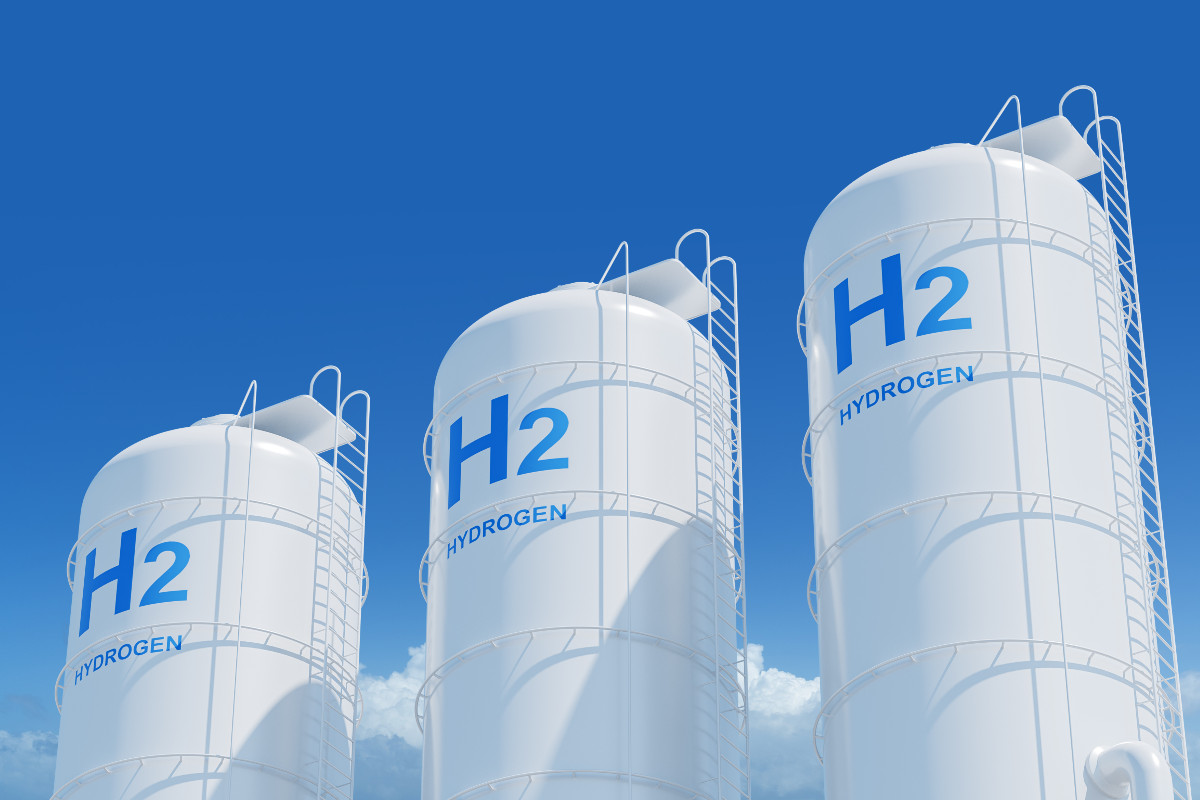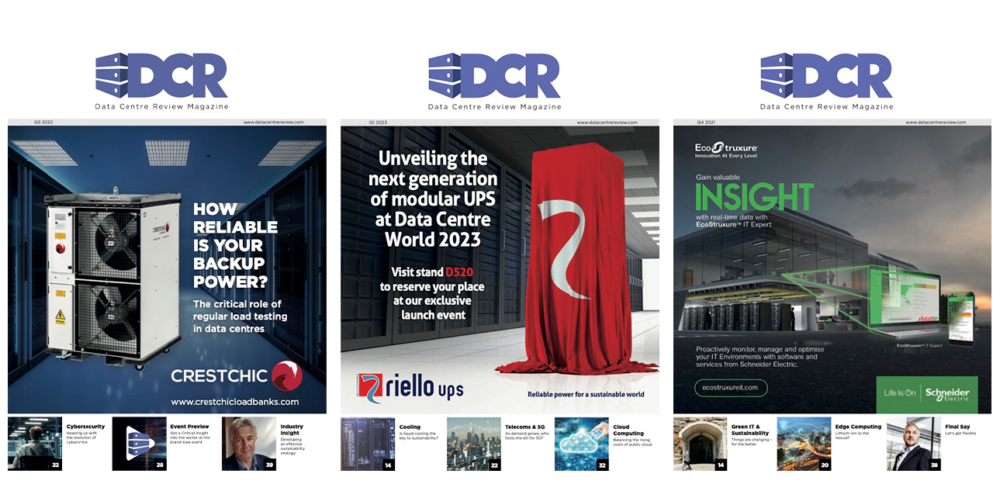Hydrogen offers a green and scalable solution for meeting skyrocketing data centre energy demands, especially in the AI era, as Andrew Cunningham, CEO of GeoPura, argues.
Artificial intelligence is revolutionising the digital landscape, driving unprecedented demand for data processing. From powering sophisticated communication algorithms to enhancing real-time decision making, AI is rapidly expanding its footprint. Yet, this surge in data processing comes with a hefty price tag: a significant increase in power consumption, particularly within data centres. By 2030, data centre energy consumption is projected to rise by 500%, with AI leading the charge.
To put this into context, a single AI query, such as one processed by ChatGPT, requires nearly 10 times the electricity of a standard Google search. This growing demand poses a critical challenge: how can data centres meet these escalating power needs while minimising their environmental impact?
Intensifying issues with energy demand
Recent news highlights the growing concerns over power demands from data centres. For instance, in Ireland, South Dublin County Council blocked Google’s plan for a new data centre, citing concerns that the local energy grid could not cope with the increased demand. This decision was influenced by the argument that adding another energy-intensive facility would strain an already overburdened grid – an issue not unique to this council, but worldwide.
Moreover, electricity distribution grid capacity shortages are making it increasingly challenging for data centres to handle their growing energy requirements. A report from ITPro indicates data centres worldwide are struggling to meet the energy-intensive demands of generative AI technologies due to these shortages. Additionally, countries like Ireland, Germany, Singapore, and China are now imposing stricter regulations on building new server farms to mitigate the pressure on their electricity grids.
These examples illustrate the urgency for the data centre industry to find sustainable solutions to its escalating energy needs. The issues facing data centres when it comes to energy sources can be broken into these three elements:
- Clean Generation Capacity: To meet our growing energy needs sustainably, we must transition to cleaner ways of generating power. Fossil fuels are no longer an option if we’re serious about maintaining a liveable climate and ensuring good air quality.
- Clean Energy Dispatchability: Renewable energy, like wind and solar, is variable. It’s abundant when conditions are right, but there are gaps. No sun at night, no wind during calm periods. We need ways to store surplus energy and deliver it when demand arises, not just for hours, but for days or even weeks.
- Electrical Distribution Capacity: Most data centres aren’t located near renewable energy sources, so they rely on grid infrastructure to deliver the power they need. Unfortunately, grid capacity is already stretched thin, and expanding it is slow, expensive, and disruptive.
These interconnected challenges make it clear that the conventional approach to powering data centres won’t suffice.
The hydrogen power solution for data centres
Hydrogen power is emerging as a pivotal solution in addressing the dual challenges of rising energy demand and environmental sustainability – and it’s available now. Hydrogen can play multiple roles in powering data centres, from serving as a temporary and backup power source to becoming the primary power option in off-grid or remote locations.
Hydrogen tackles the three problems above with an integrated solution. At its core, the approach involves building hydrogen production plants co-located with large renewable energy capacity, such as solar PV and wind. The hydrogen fuel acts as an energy reservoir, storing surplus electricity. When renewables generate more electricity than is needed, the surplus is converted into green hydrogen. The hydrogen produced can be turned back into electricity anytime or anywhere it’s needed, especially when the renewable sources aren’t generating, and energy is in short supply.
Hydrogen is stored and transported to locations where power is required, such as data centres. There, it’s converted back into electricity using Hydrogen Power Units (HPUs). These generators provide a clean, reliable energy source, alleviating grid constraints and ensuring uninterrupted power for critical operations.
The hydrogen vs. batteries question
Batteries are fantastic for short-term energy needs and quick bursts of power, but they aren’t practical for storing industrially significant amounts of energy over days, weeks, or even months. Hydrogen, on the other hand, acts as a long-term energy reservoir. It allows us to store large amounts of renewable energy and dispatch it when and where it’s needed.
For data centres, which require continuous power, hydrogen offers the scalability and reliability that batteries alone can’t provide. Plus, by decentralising power generation with hydrogen, we alleviate the strain on local grid infrastructure.
Data centre applications
Imagine a new data centre that, because of data connectivity needs, must be in a location with limited grid capacity. Even if grid upgrades are available at the site in the future, it will often be several years before they can be implemented. Knowing that, regardless of the grid availability, a data centre can start operation powered by hydrogen-fuelled HPU generators gives the data centre provider confidence to build. When additional grid capacity at the site becomes available, the HPUs can be moved elsewhere or can remain on-site to provide backup power.
During a renewable energy surplus, nearby wind farms generate excess electricity. That surplus is converted into hydrogen, stored, and delivered to the data centre. The hydrogen is then used to generate clean electricity, ensuring the data centre operates efficiently and sustainably, even during peak demand or grid outages. This flexibility is a game-changer.
Bolstering grid and community infrastructure
By decentralising power generation, data centres can support local energy infrastructure rather than straining it. For example, HPUs can provide power not only to the data centre but also to nearby communities when there’s a local energy shortage.
More importantly, by investing in hydrogen production from surplus renewable generation, data centre providers are also building the first industrial renewable energy storage reservoirs. For centuries we’ve understood the importance of reservoirs that store rainwater; now our communities will benefit in a similar way from storing our wind and solar power as renewable fuel, so that in times and places of comparative energy drought, our energy will flow abundantly.
Next steps
The technology is ready now, and its reliability has been proven across multiple sectors. If data centre operators are facing challenges with grid capacity, renewable integration, or emissions targets, hydrogen can help. This solution doesn’t just meet operational needs; it also positions data centres as leaders in sustainability.
By harnessing the potential of green hydrogen, we’re not just meeting today’s energy challenges, we’re building a clean energy future. Hydrogen power units exemplify this potential, offering a scalable and sustainable power option for the data centres of tomorrow.
In conclusion, the AI revolution is driving a power surge that demands innovative solutions. Hydrogen power stands out as a green, scalable, and reliable option to bridge the gap, ensuring that data centres can meet their growing energy needs while minimising their environmental impact. The future of data centres is green, and hydrogen is the key to unlocking that future.



